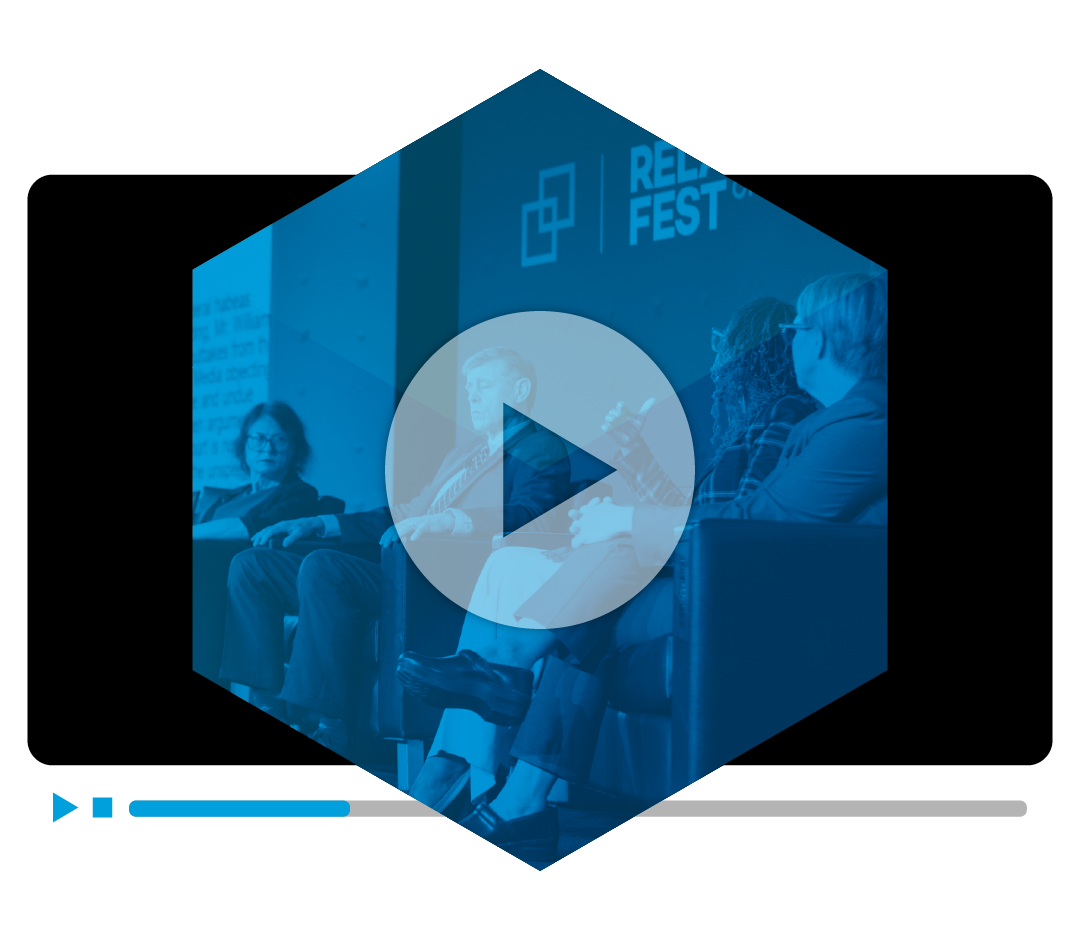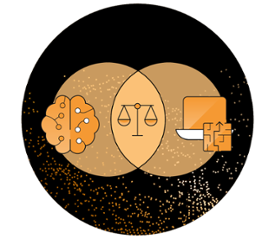AI has made so indelible a mark, and so quickly, that professionals in every industry across the globe are hurriedly solidifying their AI strategy so they are not left behind.
It’s the plucky underdog that—initially underestimated and, at times, even met with uncertainty—has evolved in the relative blink of an eye from chatbots and science fiction to a viable, defensible, useful solution that is transforming the way we work.
And to be a true leader, you have to be willing to not only get down in the weeds and get your hands dirty but also to rise above to see what’s coming, how to get there, and how best to guide others on their way. Vision like this is its own kind of magic.
And magic is exactly what AI Visionary Susan Stone brings to the industry. Here she shows us how to alchemize experience into a roadmap for success.
Step 1: Walk Your Own Path
As an avid reader, Susan knows that sometimes the most successful path to greatness is the least conventional. What makes a path effective is that it is your own. Susan’s career has been driven by this authenticity, and by identifying opportunities and making decisive moves.
As director of legal technology at AT&T, Susan manages the company’s RelativityOne instance, as well as countless other operations. A love and aptitude for technology has been the North Star of Susan’s career, beginning at an IT helpdesk at McDermott Will and Emery and eventually moving into network operations.
From there, Susan was introduced to litigation support. “It really piqued my interest,” she says, “because it kind of married my love of being able to work in technology, but then also having more interaction with the end clients within the departments. The servers never talked back to me, so I got a little lonely.”
Clear signs were pointing Susan toward e-discovery. After twelve years at McDermott and finishing school, Susan moved to a small boutique as litigation support manager, and then later to the vendor/service provider side. Or the “Dark Side,” as she playfully calls it. And then, finally, Susan shifted to the corporate sector with her to move to AT&T.
“I've completed my trifecta,” she jokes.
Step 2: Foster Your Powers
How does a leader support the success of the organization? Like the protagonists of all stories, she assembles a sturdy, powerful team. And a strong lit support team is best bolstered, according to Susan, by analytical people who are hungry to learn.
“I think where people are successful in e-discovery is by being people who can problem-solve,” Susan says. “They can be creative in their thinking.”
"I tell them all the time: I don't want a button pusher, I don't want somebody who's just going to take what I give to them and push a very specific, defined set of buttons because that's how it's written in the playbook. I want somebody to challenge me, to say there's a better way to do this.”
So how do you find that better way? By eagerly pulling at threads and noticing patterns until the whole thing unravels. And then melding strategy, creativity, and technology to forge the smartest path forward.
Step 3: Assemble Your Team
For e-discovery professionals, it’s not only a matter of knowing which threads to pull—it’s learning from what your peers are pulling and expanding those learnings into tested and defensible strategies.
“Community is really important, particularly in the e-discovery industry,” Susan says. “There isn't a focus on this in upper education. There's not a major in college on e-discovery. And in fact, when I mention to people that I work in e-discovery, they don't know what that is.
“Because of that,” Susan continues, “the community is really important because it provides a lot of insight, fostering, and mentoring that you can't get via education. So a lot of what I've learned has been trial and error on matters. It's been [the] trial and error of my peers.”
Every literary hero knows: you’re so much more powerful when backed by a clever, talented team. It’s easier to find your footing when you’ve got a tested roadmap to guide you forward. You can carve your own way from there.
Step 4: Find What Drives You
Sometimes, the right path forward is best cultivated by another kind of magic: inspiration.
In recent years, Susan was starting to feel stagnant, with every day bringing the same matters and tools.
“But two years ago,” she says, “I went to Relativity Fest and you guys introduced aiR, and I came away from that energized. And then I felt as if there was something new for me to learn finally and something new for me to grasp, and that's when I got excited again about the industry.”
Enter generative AI, a new technology built on trusted foundations promising to transform the industry from the inside out. It’s a magic wand in the hands of the hero with the ability to revolutionize workflows, boost efficiency, and automate routine tasks so legal professionals can focus their brainpower on the big stuff.
“I'm super excited myself to really see what we can do with generative and predictive AI, even outside of e-discovery,” Susan says. “But it's really just provided me with a new lease on life, so to speak. It's giving me a new excitement within working with the product."
Step 5: Harness Your Secret Weapon
But what does AI, as it is today, do best? To explain this to colleagues and peers, Susan looks to a storybook hero.
Even if there are only a few relevant documents you need to collect, you could be searching in a pool of millions. The proverbial haystack can overwhelm your search. One document turns into too many.
"That person also talked to this person, so I need go collect that,” Susan explains. “We're living in Bellatrix's vault and as the attorneys touch each of the coins, they just multiply exponentially. So really, where gen AI comes into play, is to organize all of our coins together to be able to understand and identify which goblet we're looking for. For that horcrux, because that's the key, that's our sole purpose of why we opened this vault. And then being able to quickly identify where that is and retrieve it—leaving behind millions of coins."
And that’s where generative AI excels: finding exactly what you need with laser-precision and leaving behind all of the noise.
“Stop digging,” Susan advises. “That's what I tell the attorneys. Stop digging. Just be happy with what you got.”
Step 6: Learn How to Use It
But how do you even get started using AI? How do you learn how to extract real value from the technology?
"For anybody who's new to generative AI,” Susan suggests, “I tell them to always start small. And really start more on your personal life. One of the things that I've been using generative AI to do is as a recipe builder. I do like to cook for my family when I'm home.”
Mastering AI starts with the basics. If you want to cook a sumptuous meal, you have to start with good ingredients. If you want to effectively use generative AI, learn how to write good prompts. What goes in is what comes out.
"I think then once you build the confidence of like, ‘Yeah, it works in my personal life, how can I then move it into my professional life?’ Then you can start using a tool and playing with it there as well."
This confidence will thrive best on a bedrock of knowledge. Creativity and vision are cornerstones of innovation, certainly, but it helps to know not to put garlic in your apple pie.
“Educating yourself and your team on AI is critical to addressing concerns within your organization and with your clients. Having a clear understanding of the capabilities, benefits, security, and regulatory compliance for the technology will help you persuade adoption in your organization.”
Step 7: Look Forward and Make a Plan
The industry’s fervor for generative AI innovation means the potential for persistent data problems to find tidy solutions.
“One of our biggest challenges is identification of work product,” Susan says. “So I can't wait to see AI be able to really dive into all areas of a document. Being able to take a look at meeting invites, at transcripts from online meetings, reading documents and other emails outside of the system. And then say, this may potentially be work product because it was being directed by the lawyer at this meeting. Here's the transcript to prove it.”
Because right now, that work is manual, and it’s tedious and time-consuming. Putting those pieces together requires a meticulous wall of pins and string that generative AI has the potential to eliminate.
AI is the wise guide on the journey that helps legal professionals cut through the fog and focus only on what’s needed most.
“The biggest value AI provides will be in allowing our teams to focus on more complex and nuanced aspects of e-discovery, leaving the tedious tasks to AI. This shift will provide us with more time to focus on key insights within our data and formulate our legal strategies much faster, even with the growing data volumes every organization faces.”
Step 8: Apply Your Skills and Save the Day
It's one thing to possess abilities, knowledge, team, and tools. But how do you turn it all into magic?
“Innovation is taking the tools that you have available to you and then making them better, building on that,” Susan says. “I think there is innovation in terms of building new technology, but I'm not smart enough to do that. I am smart enough to take what's given to me, digest it, learn what it can do and can't do, and then build off of that.”
What’s the simplest way to build something new? Layer onto the foundation you already have.
“A lot of people aren't aware of what tools are available within their applications,” Susan continues. “I think they're just used to seeing what they see on the front end. I did a lot of custom development with objects within RelativityOne and people were always like, ‘Wow, I didn't realize I could do that!’ So, to me, that's innovation.”
Epilogue: Putting It All Together
As AI Visionary Susan Stone will tell you, the formula for success is actually fairly straightforward. Build your skills, leverage your resources, lean on your community, and learn to brandish powerful tools. And above all, keep a keen and analytical eye aimed at the future.
Are you ready to make some magic?
Graphics for this article were created by Caroline Patterson.












